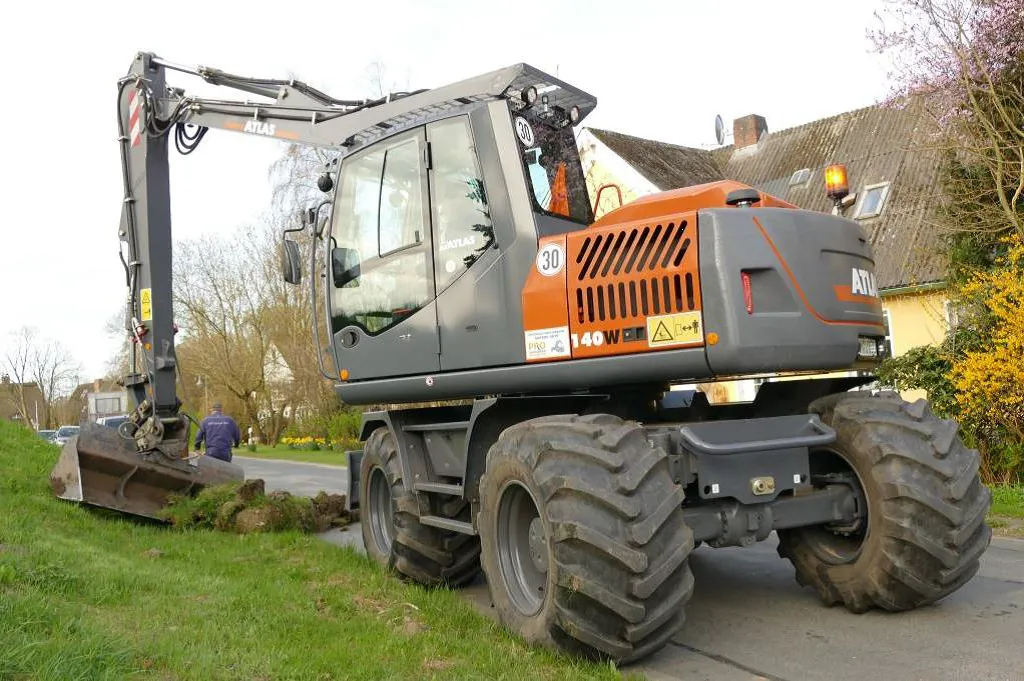
The ATLAS 140 W is equipped with huge 710/45-26.5 20 PR tyres and an undercarriage developed for working on marshy wet ground.
The 140 W also has a speed of 30kph on roads and pathways so it can be used for all types of jobs on both difficult wet terrain and on the road,” said Frank König, employee of the local authority maintenance association Untere Oste, based in Hemmoor, a small town in northern Germany.
The association maintains nearly 600km of waterways, pumping stations, polder and barrage pumping stations, sluices, culverts and various earthslides and bed pitches.
In order to generate extremely low ground pressure,
To travel over the ground as lightly as possible, the axles have a limited slip differential of 35%, which prevents wheel spin and the excavator from getting bogged down in muddy or marshy ground.
With an optional second jib, the reach is 11m at which it still lifts loads of 1.2tonnes without the need for stabilisers.
Power is supplied by a 4-cylinder
There is an attachment kit for up to 10 hydraulic tools, including hydraulic hammer and vibration pile driver, all of which can be controlled from cab. The hydraulic system was adapted to ensure consistent pressure and oil supply for powered units like mowers or mulchers and to keep the wear of the tools at a minimum.
During mowing operations with an oil flow of 26litres/min and a constant pressure of 180bar, none of the tools’ movements will cause a loss of performance. Average engine speed is 1,480rpm, which means that it consumes less than 6.3liters of fuel per hour.









